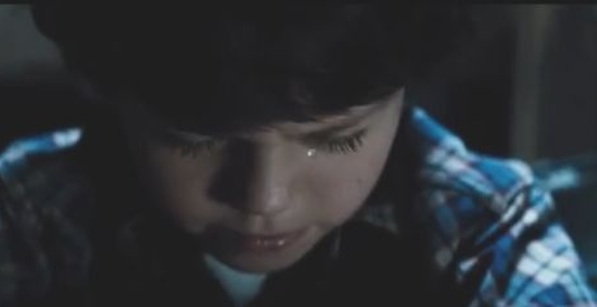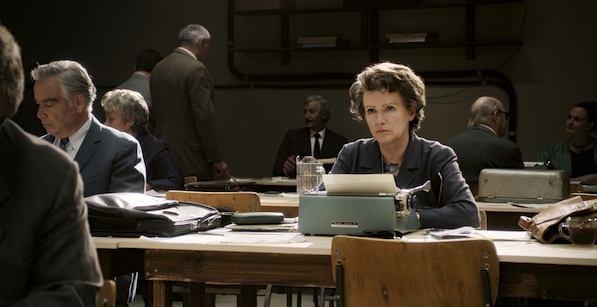Man of Steel, one of the worst big budget blockbusters of 2013, has a moment that made me realize why I make video essays. As a child, Clark Kent is horrified to discover that he possesses X-ray vision. Look at how the special effects depict his super sight—recomposited images, blurring and discoloration make his environment alienating. And when he looks at others, he sees their insides. In other words, he can’t stop seeing. And seeing too much seems overwhelming, dehumanizing and horrifying. “The world’s too big mom.” Eventually little Clark Kent learns how to master his superpowers, even though the movie doesn’t know what to do with them.
I like to think of the video essay as cinematic X-ray vision, a way to see inside movies and understand how they work. And I used to think that having this power would help me enjoy movies more, but instead it has made me realize how much watching movies is like being a slave to movies. There’s a perverse kind of social contract in place with most mainstream movies. They demand your obedience and submission in order for you to enjoy them. This obedience and submission is something that I’m finding harder and harder to tolerate.
I’ve become more aware of how movies are always telling you how to think about them, and how they teach you how to watch them. Two of the most interesting scenes of 2013 involve teaching. In Hannah Arendt, the hero, a university professor, makes a heroic speech to her class, in defense of her controversial writings on the banality of evil and the responsibility of Jewish leaders during the Holocaust. On a screenplay level, this is some of the most intelligent dialogue of the year, as Arendt argues for free thought as humankind’s saving grace. But the filmmaking cheats by telling us how we should think. On one side of the room, a Jewish skeptic, middle-aged and grumpy. On the other side, a young beautiful girl student, radiating energy, eager to learn. Who we side with is a no-brainer. And the no-brain quality makes the scene a contradiction in itself: the words are encouraging us to think for ourselves, but the images are telling us how to think.
There’s a scene in the film Spring Breakers that works in the opposite direction. The professor here is faceless, anonymous. And these two girls in the class have other things on their mind than the lecture he’s giving. Here, female agency is pitted against academics and intellectualism, and sexual energy is power in and of itself. But what also drives this scene is the production design, a field of laptop lights emitting candy colors. These lights and colors are what hold our attraction throughout the film; they have a hypnotic power. Everyone in the class except for these two girls seems to be hypnotized by these screens. And what about us? Are we to let ourselves be hypnotized as well?
Personally, I ultimately reject what Spring Breakers has to offer, but what I appreciate about it is that in order to really engage with it, you have to engage with a world of images well outside of it—YouTube, Instagram, rap videos, even online porn. This universe of images and contexts is well beyond what any one person can fully know. In light of this vast field of contexts, even the insights of the most trusted film experts can’t be taken as sufficient.
Take the film Gravity. This film has been championed by critic Scott Foundas and scholar Kristin Thompson as a special instance of a big budget experimental film made in Hollywood, comparing it to the works of Michael Snow and Hollis Frampton. They don’t seem to realize that there’s an equal if not greater connection to be made with video games (Dead Space 3, Descent, Uncharted, even Final Fantasy VIII from almost 15 years ago features a rescue sequence eerily similar to Gravity), and how Gravity is actually another instance of how video game aesthetics have taken over big budget filmmaking.
It makes you wonder if the people who compare Gravity to experimental film are just using the movie as an excuse to talk about experimental movies. If so,that’s an agenda I support in principle. But it makes me realize, again, that how to look at a movie isn’t something to take for granted. There are as many ways to look at a movie as there are stars in outer space.
So we have to ask ourselves: which ways of looking are the ones we want to lead us as we make our way through this infinite universe of images?
Kevin B. Lee is a filmmaker, critic, video essayist, and founding editor of Keyframe. He tweets as @alsolikelife.
For the complete list of year-end lists on Keyframe, go to The Year in Film: 2013.
For the complete index of the films on these lists, go to 2013 Year in Review: Indexed.






